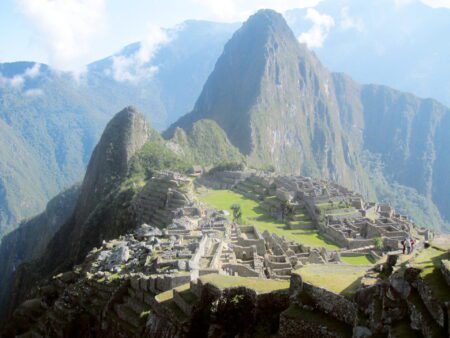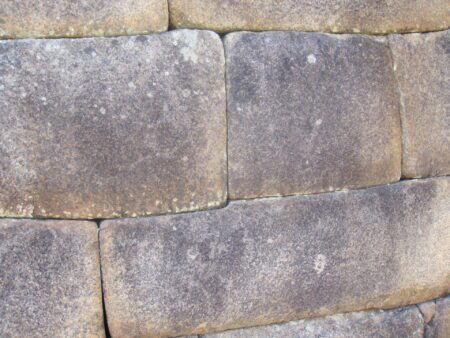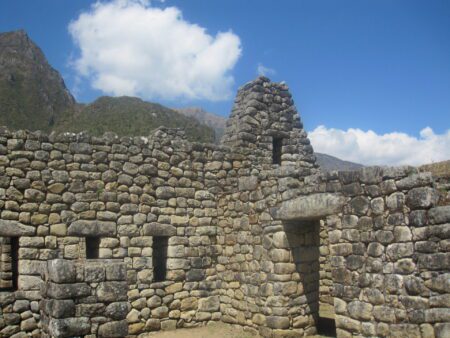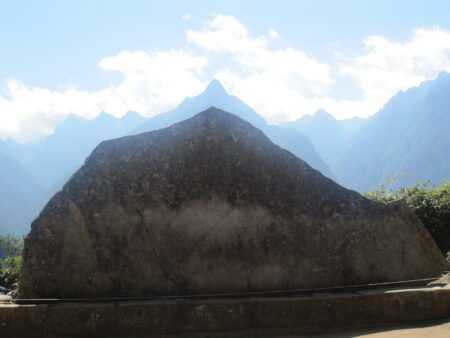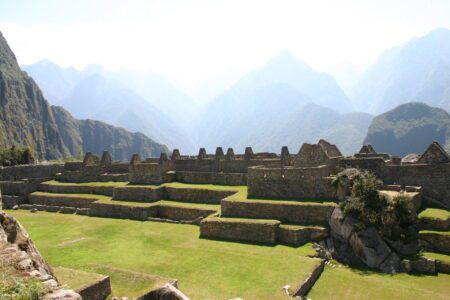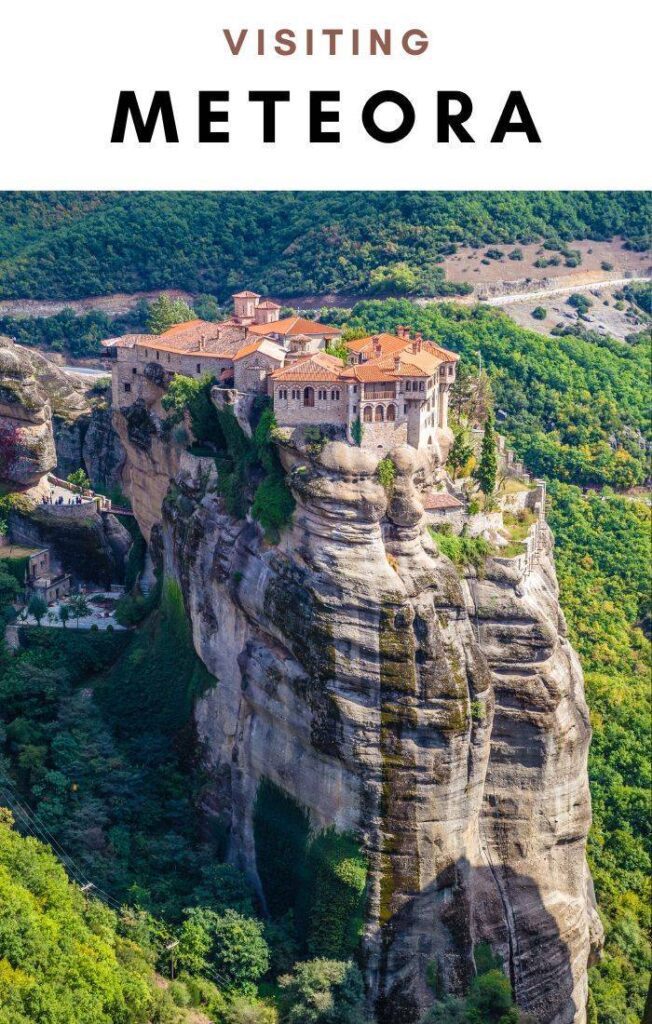Machu Picchu is an ancient Incan site located in the Peruvian Andes. Its stunning beauty as well as its importance in the understanding of pre-Columbian cultures have attracted explorers throughout its history. It stands today as one of the most astonishing and most recognized archaeological sites in the world and the most visited destination in Peru.
Machu Picchu was built during the height of the Incan Empire and showcases the level of engineering expertise of its people, as the city was erected with large granite stones that are seamlessly cut and fitted together without mortar. These perfectly interlocked stone slabs used in Incan architecture are always a sight to behold, but they are even more impressive in Machu Picchu, given its remote location. The citadel also exemplifies the almost maniacal attention towards astronomy of the “Children of the Sun” Incas, with numerous buildings and temples that align with the sun during the solstices, creating shadows and pathways of light.
Of all the majestic ancient wonders of the world, Machu Picchu may be the most difficult to visit in today’s easy tourism. Its remote location and the need for a hike at altitude make it somewhat more special. There is no Colosseum that can be visited with a quick exit from the metro station. Machu Picchu instead requires visitors to embark on a journey and acclimatize to the altitude but rewards them with epic vistas, a spiritual connection through grand sacred structures built within the surrounding rugged nature, and a glimpse into the life of the great empire of the Children of the Sun.
The following guide will help you plan your visit so that you can make the most of the “Lost City of the Incas”.
Basic info
Machu Picchu was a city built by the Incan empire in 1450 and is situated inside the Historic Sanctuary of Machu Picchu in the Cusco region of Peru. It has been a UNESCO World Heritage Site since 1983 and was voted one of the New Seven Wonders of the World in 2007.
Over 1.5 million visitors visit the site annually, and it is one of the most recognizable and famous heritage sites in the world.
The city stands at 2430 m above sea level and is nestled in the valley between the two mountains of Machu Picchu and Huayna Picchu. It is a large complex, with terraces, plazas, temples, and residences, all of which are incredibly well-preserved.
The site is open year-round and can be generally visited from 6 a.m. – 3 p.m. but has strict entrance schedules, visit routes, and a maximum number of visitors controls.
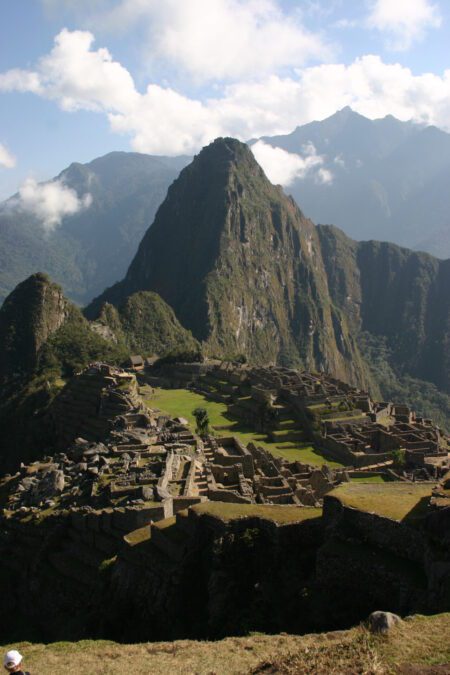
About
Machu Picchu was built in 1450, at the height of the Incan Empire. The purpose of the city is still debated to this day, with some considering it to have been the royal estate for the emperor Pachucuti, while others believe it was a religious sanctuary.
The city had a short life, lasting only approximately 100 years before the Spanish conquest of Peru, and its fall is also debated, with some attributing it to the collapse of the empire during the Spanish invasion while others believe that civil war or a smallpox epidemic were the culprit behind the abandonment of the majestic city.
The citadel stands at 2430 m above sea level and is strategically placed between the saddles of two mountains: Machu Picchu (“old mountain”) to the south and Huayna Picchu (“young mountain”) to the north, and provides unrivaled vistas into the valleys on both its sides.
This location also made it a natural fortress, easy to defend. The two entrances of Inti Punku—the Sun Gate at the end of the Inca Trail, which unsurprisingly is aligned with the Sun during solstices—and the narrow Inca Drawbridge that coasts the steep rock cliffs and whose wooden bridge could be easily retracted—create choke access points to the citadel.
Machu Picchu is incredibly well-preserved and is considered an engineering marvel. Built entirely of cut granite stones without the use of mortar, the city showcases sophisticated structures, terraces, gates, and walls built in harmony with its rugged surroundings. This advanced craftsmanship of Inca architecture is on full display at Machu Picchu and personifies the height of the Incan Empire that once stretched from Ecuador to Chile.
The Site
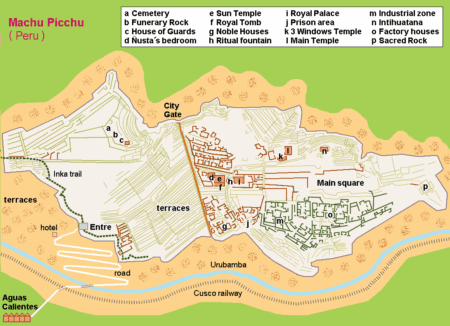
The citadel has a strategic location, which allows it to be easily defended. Nestled between the mountains of Machu Picchu (“old mountain”), Huayna Picchu (“young mountain”), and Huchuy Picchu (“little mountain”) The entrance to the site is either through Inti Punku, the Sun Gate, which, unsurprisingly and like most architectural constructs of the Incas and in Machu Picchu, is aligned with the Sun during solstices, was the traditional way to enter the city from the Inca trail, or the Inca Bridge, coasting the steep rock cliffs and whose wooden bridge could be easily retracted in case of attacks.
The city itself is laid out in two distinct areas: the agricultural sector and the urban sector. The agricultural sector of Machu Picchu consists of numerous terraces that were used for food production and crop cultivation. These terraces were laid out in a typical 3-tier design, with each level separated by stone walls. The urban sector of Machu Picchu consists of a complex network of plazas, temples, and habitations.
The main central plaza is the Sacred Plaza which served as the heart of the citadel and hosted religious ceremonies, rituals, and as well as astronomical observatories to mark the changing of the seasons at the solstices.
The Sacred Plaza is surrounded by several buildings, the most notable being:
- The Temple of the Sun: located on the northern edge of the Sacred Plaza, this building offers wonderful views of the surrounding mountains. The design of the temple contains intricately carved stone walls and trapezoidal windows. It was dedicated to the Inca sun god Inti and is aligned with the sunrise during the winter solstice, demonstrating the advanced astronomical knowledge of the Incas and their reverence for the sun.
- Intihuatana Stone: Another structure closely tied to astronomical observations, the Intihuatana Stone is a pillar that served as a sundial. Literally translating to “hitching post of the sun“, it is also aligned with the sun during the solstices, marking the changing of seasons. It also played an important role in rituals.
- Temple of the Three Windows: Its central location within the Main Sacred Plaza speaks to the significance of this building. It consists of three large trapezoidal windows that frame the mountains and valleys, creating a beautiful backdrop. It also showcases the incredible engineering techniques of the Incas with their incredibly precise stone carvings, where each stone fits seamlessly with the other without the use of mortar.
- Temple of the Condor: With two large stone blocks that resemble the wings of a condor (which was revered by the Incas as a symbol of power), this building has less significance astronomically and was mostly used for religious worship and as gathering spot for ceremonies.
Getting there
By train: Most visitors reach Machu Picchu by train. Trains depart either from Cusco, Urubamba, or Ollantaytambo. There are two companies managing trains: Peru Rail and Inca Rail, each offering four different services:
Peru Rail:
- The Expedition: wagons are covered by panoramic windows and there is food service on board
- The Vistadome: wagons have panoramic windows on the roof and sides
- The Sacred Valley: a more luxurious option offering lunch or dinner in the observatory or dining car
- The Hiram Bingham: one of the most luxurious trains in the world offering gourmet dinner, transportation, and tickets to Machu Picchu. I personally traveled on this and the price of 500$ per person is well worth it.
Inca Rail:
- The Voyager: wagons have panoramic windows, and comfortable seats, and the train offers a somewhat local experience with Latin American music and drinks from Andean fruits and herbs.
- The 360°: Similar to the Voyager with large panoramic windows, Latin American music, and a selection of hot and cold beverages, as well as souvenirs sold on board.
- The First Class: Luxurious with natural flowers, covered tables, welcome cocktail, and gourmet lunch/dinner.
- The Private: Known as the ‘Princess Inca’, this train is of presidential class, operates only by request, and has a maximum capacity of 8 people.
By road: This is the cheapest option. Aguas Calientes is the closest town which stands at the foot of Machu Picchu. A collective bus will cost around 12$. Aguas Calientes can be reached by bus through the hydroelectrica route from Cusco. It is a 5h trip to the town of Santa María and then another 2h to the Hydroelectric station. From there it is either a 2h walk or a 20minute train ride to Aguas Calientes.
By foot: This is the “traditional way” and sort of a pilgrimage, as well as being the preferred way for mountain lovers and hikers, given the immense beauty of the Andes. A simple hike from Aguas Calientes will take between 1.5 – 2 hours. There are however several treks and trails to reach the Lost City:
- The Inca Trail: this is the original route used to reach the city and is one of the most famous hikes in the world. It is a 4-day, 3-night hike that leads to the Sun Gate.
- The Salkantay Trek: 74 km trek that begins in Mollpata, reaches a height of 4600m and passes along the Humantay glacier. Usually requires 5 days.
- The Jungle Trek: This is a 4-day, 3-night trek aimed at sports enthusiasts which includes activities such as river rafting, mountain biking, and zip-lining across the canopy.
- The Lares Trek: A 4-day, 3-night trek that starts in Lares. This is more of a cultural experience passing by small villages rather than a strenuous hike.
Entrances & Getting around
Being one of the most visited sites in the world, there are many rules when visiting such as:
- A 4-hour time limit, which is nonetheless enough to enjoy the site.
- It is mandatory to be accompanied by a guide when visiting the interior of the city.
- There are controls on the maximum number of daily visitors.
- A specific route needs to be followed, without backtracking.
- Entrances are scheduled in 1-hour intervals from 6 a.m. to 3 p.m., and there is no re-entry allowed.
There are two entrances to the citadel:
- The traditional Inca Trail entrance passing through the “Sun Gate”. As mentioned above the Inca Trail is a 4 day hike from Cusco.
- The direct citadel entrance that is about an hour’s hike from the closest town of Aguas Calientes
Once inside there are 4 circuits for visiting (+ circuit 5 for organized groups). Click the pictures to zoom in and view the details of each route.


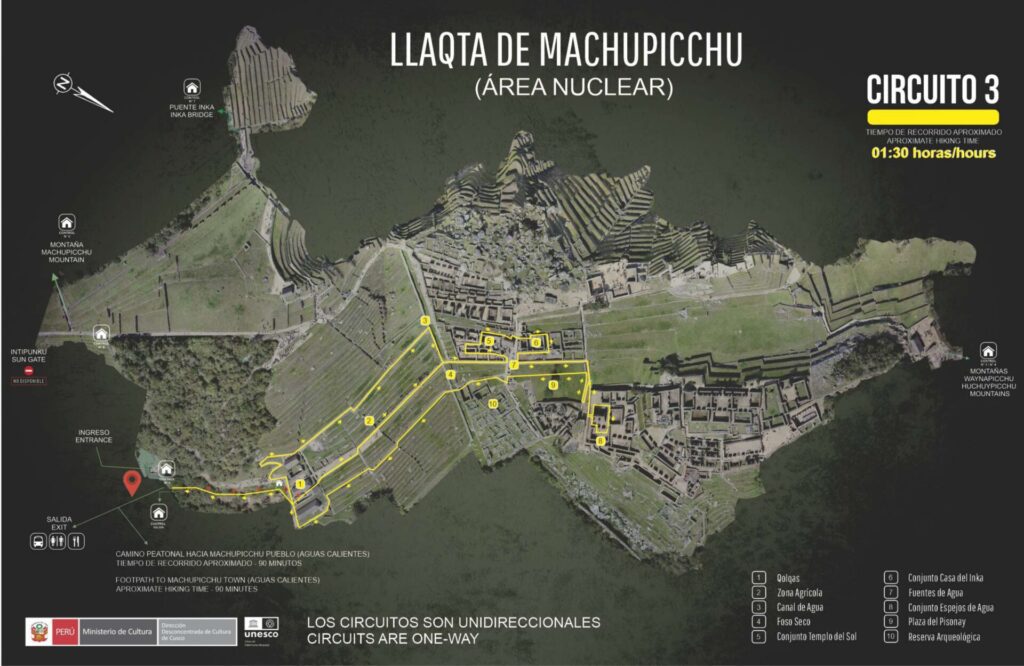

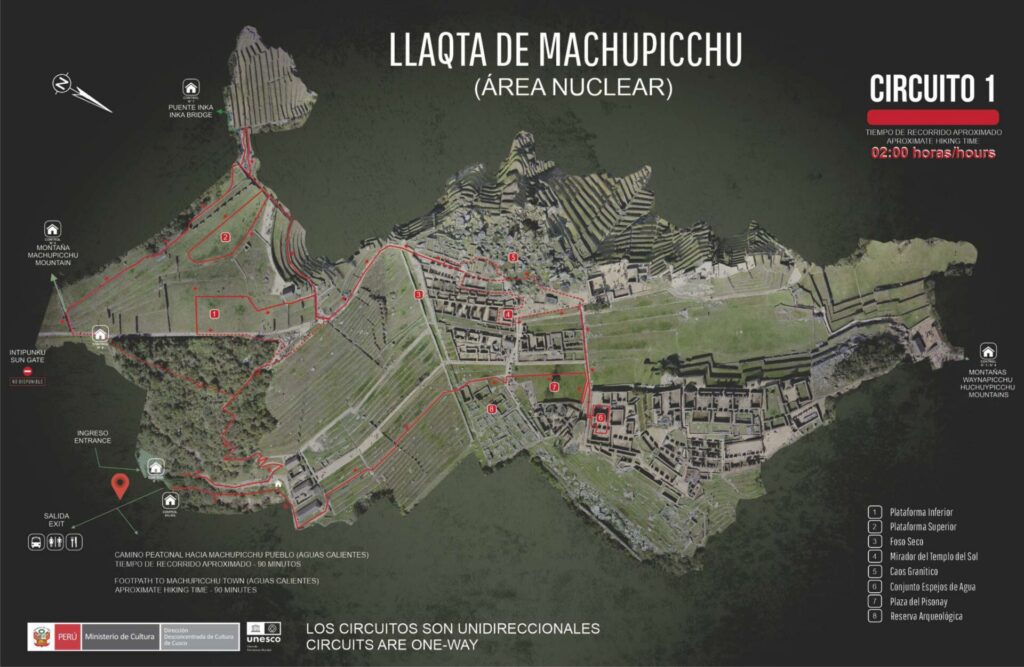
Tickets
Tickets need to be purchased in advance and cost between 40$ and 53$. These can be bought online at the official website here: reservas.machupicchu.gob.pe, or at official ticket booths in Cusco.
There are various options when buying tickets:
- Machu Picchu General Admission Ticket: This is the standard ticket to the archeological site (and the most popular route is Circuit 4).
- Machu Picchu Ticket + Huayna Picchu Mountain Ticket: This ticket grants access also to the “young mountain” – the mountain peak which can be seen in basically every photograph of Machu Picchu and is located behind the site.
- Machu Picchu + Machu Picchu Mountain Ticket: This ticket provides access also to the “old mountain” – the mountain peak known for its breathtaking vistas.
- Machu Picchu + Huchuy Picchu Ticket: This is the less popular and quieter “little mountain” hike which is relatively easy and offers a different view of the landscape.
- Machu Picchu + Inca Bridge Ticket: This ticket provides access also to the Inca Bridge. Beware in case you suffer from vertigo as this might not be for you (although this can be said of the entire site in general)
To manage overcrowding, entrances are controlled and visitors are allowed entry at specific time slot to visit, as can be seen below:
| Ticket type | Price | Entry times and limits |
|---|---|---|
| Llaqta de Machu Picchu (circuit 1,2,3,4) | 152 soles | 6 am, 7 am, 8 am, 9 am, 10 am, 11 am, 12 pm, 1 pm, 2 pm |
| Circuit 4 + Huayna Picchu | 200 soles | 7 am, 8 am, 9 am, 10 am |
| Circuit 3 + Machu Picchu Mountain | 200 soles | 7 am, 8 am |
| Circuit 4 + Huchuy Picchu | 152 soles | 7 am, 8 am, 9 am, 10 am, 11 am, 12 pm |
| Circuit 1 or 2 + Inca Bridge | 152 soles | 7 am, 8 am, 9 am, 10 am, 11 am, 12 pm, 1 pm, 2 pm |
Take note of the altitude
Machu Picchu stands at 2,430 m above sea level. While this is far from the 3,400m of Cusco, altitude sickness is common, especially considering that visiting the site involves a hike.
While AMS (Acute mountain sickness) can strike anyone, independent from age or fitness, it is more common to have mild altitude sickness. This normally lasts between 1 – 3 days and symptoms include:
- headache
- loss of appetite
- feeling or being sick
- feeling tired or exhausted
- dizziness
- difficulty sleeping
To prepare yourself to the altitude you should acclimatize before your trip. The best way is to spend a few days in Cusco allowing your body to gradually adjust. If you fly directly to Cusco those days will not be pleasant as you will suddenly reach 3000+ mt. but if you relax for a few days there, you can then easily visit Machu Picchu. For a more moderate approach, you can also stay in Urubamba which stands at 2870mt.
It is best to avoid alcohol before your visit and to bring plenty of water with you since staying hydrated is important at altitude.
During the visit you will probably find yourself frequently out of breath and possibly with mild headaches. This is normal (but can also be a sign of more severe altitude sickness). Take your time and take breaks often.
Generally speaking, the important thing is to remain hydrated and try to breathe and take in as much oxygen as possible.
You can also carry altitude sickness tablets with you to help out with the symptoms or do what the locals do which is drink the mate de coca. This is tea made with coca plant leaves. The drink has stimulating effects similar to coffee and has many beneficial properties. The increased heart rate allows better respiration, thus more oxygen intake and more energy.
A note about mate de coca
Coca is very important in the Andean culture and locals will be offended if this ancient, community-building product is likened to cocaine and is treated by tourists as a recreational drug. In fact, cocaine was only isolated as late as 1860 while coca historically has been used extensively in the Andes specifically for its medicinal qualities in combating hunger, cold, and altitude sickness. That being said, and although a coca leaf contains only 1% cocaine and it is far from the known narcotic, it can make a drug test turn out positive.
Weather
Due to its location on a mountain peak, Machu Picchu is exposed to strong winds throughout the year. Generally the region experiences a subtropical highland climate which is characterized by warm and humid summers and cool and dry winters.
In the summer months, from December to March, temperatures generally range from 16°C to 25°C during the day. At night, the temperature can drop to as low as 1°C. The winter months, from April to November, experience cooler temperatures, ranging from 10°C to 18°C, with nighttime temperatures as low as -3°C.
Because of the subtropical climate, rainfall is abundant and afternoon showers are common in the winter season.
Clothing/Gear
Because of the altitude and hiking conditions, it is recommended to bring lightweight clothing and gear. A poncho is also recommended in the event of rain (since umbrellas are not allowed)
Shoes: You don’t need any particular hiking shoes, but these should nonetheless be comfortable and with good tread. After all you are hiking in the mountains.
Insect repellent is also must and is arguably the most important thing to bring with besides water.
On top of these things, the usual hat, sunglasses and sunscreen to protect from the Sun are recommended.
Best time to visit
Despite strong visitor control to limit the numbers, Machu Picchu attracts over 6000 daily visitors so the site can get pretty packed.
The peak season is from May to September when the temperatures are highest and rainfall is minimal, while the off-peak season is from November to March, mostly due to the weather.
If crowds are your main concern late April/early May or late October may be the best time to visit but the weather needs to be accounted for.
As for visit times, it is best to get there early in the morning when the crowds are sparse and the atmosphere is more peaceful. Mornings however are also when the clouds and fog are more prevalent so if photography is your main interest it is better to visit later during the day.
Rules & Etiquette
- Tripods or drones are not allowed
- As mentioned above, purchased tickets include a guide and it is mandatory to be accompanied by a guide
- A passport must be brought with you for ID verification
- There is a fixed route and no backtracking or wandering around is permitted
- To prevent littering, bringing food or drinks is strictly prohibited. The same can be said for smoking, also to prevent fire hazards (and besides I don’t know who could smoke at that altitude after a hike)
- Umbrellas or walking sticks are also not allowed.
Other tips
- As mentioned above, visiting the site and the Sacred Plaza early in the morning is the best way to appreciate the tranquility and spirituality of the central space
- Clearly, there are no bathrooms so program accordingly
- Pictures of Machu Picchu often show clear skies and wonderful weather but that is not necessarily the case. If visiting in the morning the site will be shrouded in fog and clouds and it can be quite chilly. Since the site is located in the cloud forest, rainfall is also common.
- Insect repellent is a must.
- The combination of altitude and physical activity can be challenging and you will probably feel the need to take frequent breaks to rest and catch your breath.



